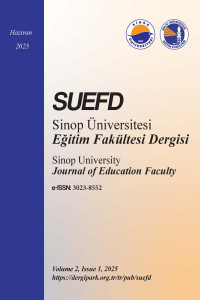Systematic Reviews and Meta-Analysis
Systematic Reviews and Meta Analysis
1. Okullarda Mikro KimliklerReviews
Research Article
Issue Editorial Board

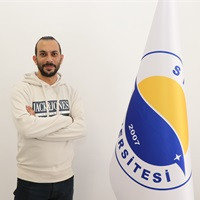



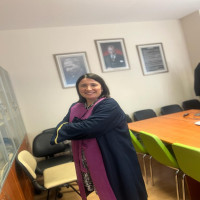
Issue Reviewers

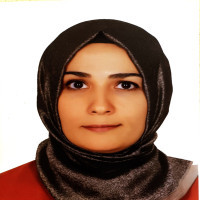
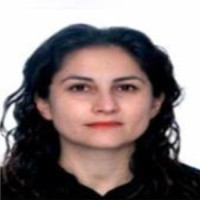

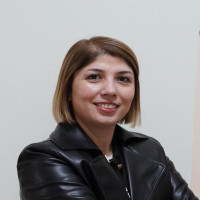


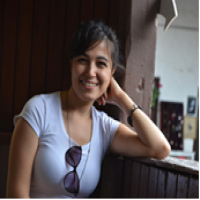
Aim & Scope
The aim of Sinop University Journal of Education Faculty (ISSN: 3023-8552) is to support the development of knowledge in the fields of educational sciences, teacher training and teaching in the world and Turkey by providing qualified and original contributions. Sinop University Journal of Education Faculty (SUEFD) publishes studies that include quantitative, qualitative, mixed and original new research approaches in line with academic, universal scientific criteria related to education and teacher training.
The scope of Sinop University Journal of Education Faculty (ISSN: 3023-8552) is Educational Sciences (all fields such as educational administration, supervision, planning, educational programs, guidance and psychological counseling, social and cultural foundations of education, adult education, higher education studies), teacher training and all field education content research articles in education faculties. Articles that can be reconciled with educational sciences in terms of their subject matter can be sent for publication. Candidate articles related to different branches and fields of science (other fields other than education) are considered out of scope and reported as editorial rejection.
Author Guidelines
SUEFD attaches importance to writing articles in accordance with the article writing templates on the journal's article template page. We kindly request our authors to consider the relevant template (APA 7) when submitting articles to our journal. All studies submitted to our journal must have "Ethics Committee Approval" if necessary. Studies without ethics committee approval will not be included in the evaluation process. In order for candidate articles submitted to the journal to be accepted into the referee process, they must be appropriate to the journal's subject area, original, unpublished anywhere else, prepared in accordance with the journal format, and have a similarity report (Ithenticate or Turnitin report) score of less than 15%.
You can access the Journal Article Template and Forms here. Please fill out the required documents when submitting an article to the journal.
Articles sent to Sinop University Journal of Education Faculty as research articles, compilations, review articles, case reports, meta-analyses are evaluated.
• Articles sent to the journal should not have been published in another publication or should not be in the publication process. Studies previously presented as papers in a congress, workshop or meeting may be published if deemed appropriate by the editorial board, provided that the date and place are specified. All responsibilities in this regard belong to the authors.
• Articles can only be sent to our journal by becoming a member of Dergi Park. All processes of the journal are carried out electronically.
• The author fills out the Author Copyright Transfer Form and sends it as an attachment to the article. If there is more than one author, an Author Contribution Form explaining the contributions of the others is prepared.
Articles sent to the journal are first reviewed by the editorial board. Articles that do not comply with the journal's writing and publishing principles are returned to the author for correction. If the authors of the article do not complete their duties by the end of the periods defined by the editors regarding the arrangements, the evaluation process may be terminated by the journal management.
• Articles approved by the editorial office are sent to at least two referees for evaluation, with the names of the author and referee kept confidential. New referees are appointed by the editorial office in place of referees who do not send their reports within the specified time.
• The journal may request corrections to submitted articles upon the request of the referees, or it may also have the right to reject the article. Requested corrections are notified to the authors via the Dergi Park article tracking system. Referees may request to see the corrections before the article is published. The final decision on the publication of articles is made by the editorial office, taking into account the opinion of the majority of the referees. Authors are notified of articles that have been decided to be published.
• It is preferred that the entire text, including articles, notes, tables, figures, graphics and references/bibliography, does not exceed 10,000 words.
• At the beginning of the article, there should be an abstract in Turkish and English, not exceeding 300 words, that briefly and concisely expresses the subject. The article should start with an “Introduction” section that addresses the scope and approaches in the literature related to the research, then reflect the methodological information of the article such as the purpose and hypothesis/model/research problems with the title “Method” and end with a “Results and Recommendations” section where the findings are evaluated and recommendations are presented.
• In addition to the Turkish and English abstract, an extended English abstract of 1500-2000 words should be added at the end of the articles in accordance with international standards. (Extended English abstracts are not required for English articles.)
• Articles are written on 21x29.7 cm (A4) pages adjusted to leave 2.5 cm space from the top, bottom, right and left, and 0.4 cm space for the footer.
• The main text should be written in 11 points and 1.5 line spacing; Turkish and English abstracts, footnotes and references should be written in 10 points and single-spaced; footnotes should be written in 12 pt. and single-spaced. The first line of the paragraphs and the second line of the references should be indented by 1.25 cm. Calibri font should be used throughout the study.
• Turkish and English keywords should consist of a maximum of 5 words.
• Turkish article title should be in capital letters. Only the first letters of the English title, Abstract, Keywords, Abstract and Keywords should be written in capital letters and these words should be 0.6 pt. away from the abstract text.
• Tables, figures, photographs, graphics and drawings should be numbered sequentially, the first letter of each word in their naming should be written in capital letters and the table title should be italic. The title and content text should be in 10 points and 12 pt. line spacing, and there should be no distance between them and the table (Table 1: Age-Gender Status).
• Block quotations exceeding three lines in the text should be in italic 10 points in “quotation marks”, 1.25 cm line indented from the left and 0.5 cm line indented from the right and 0.6 pt. away from the main text.
• In APA writing, explanations are given under the Endnotes heading before the references, not under the text, in the order of footnote numbers.
• During the evaluation process, information about the author (author name, title, institution and e-mail address) should not be given in the text. This information should be included in the Title Page file.
• In Turkish studies sent to the journal, it is mandatory to comply with the grammar and spelling rules of the Turkish Language Association (TDK).
• The accuracy of the sources is the responsibility of the authors.
• The American Psychological Association (APA 7) style is used as the reference system for articles sent to Sinop University Journal of Faculty of Education.
• Authors who send articles to our journal must have up-to-date Institution, Title, ORCID and Country information in their Dergi Park user records.
• The journal is digitally indexed using the LOCKSS system used by Dergi Park.
Ethical Principles and Publication Policy
The publication processes implemented in Sinop University Journal of Education Faculty (SUEFD) constitute the basis for the development and distribution of knowledge in an impartial and respectful manner. The processes implemented in this direction directly reflect on the quality of the work of the authors and the institutions that support the authors. Peer-reviewed studies are studies that embody and support the scientific method. At this point, it is important for all stakeholders of the process (authors, readers and researchers, publisher, referees and editors) to comply with the standards regarding ethical principles.
SUEFD expects all stakeholders to carry the following ethical responsibilities within the scope of publication ethics.
The ethical duties and responsibilities listed below have been prepared by taking into account the guidelines and policies published by the Committee on Publication Ethics (COPE) as open access (COPE Directive).
The publication of an article in a peer-reviewed journal is a necessary building block in the development of a harmonious and respected knowledge network. It is a direct reflection of the quality of the work of the authors and the institutions that support them. Peer-reviewed articles support and shape the scientific method. Therefore, it is important for all parties involved in the publication, the author, the journal editor, the referee and the publishing organizations to agree on the standards of expected ethical behavior:
1- Authorship
• The reference list must be complete.
• Plagiarism and false data must not be included.
• The same research should not be attempted to be published in more than one journal, and must comply with scientific research and publication ethics.
Actions that are against scientific, research and publication ethics are as follows:
a) Plagiarism: Presenting the ideas, methods, data, applications, writings, figures or works of others as one's own work, partially or completely, without citing their owners in accordance with scientific rules,
b) Forgery: Producing data that is not based on research, editing or changing the presented or published work based on false data, reporting or publishing these, presenting a research that has not been conducted as if it has been conducted,
c) Distortion: Falsifying research records and obtained data, presenting methods, devices and materials that were not used in the research as if they were used, not evaluating data that is not in line with the research hypothesis, tampering with data and/or results to fit the relevant theory or assumptions, falsifying or shaping research results in line with the interests of persons and institutions receiving support,
d) Re-publication: Presenting more than one work containing the same results of a research as separate works in associate professorship exam evaluations and academic promotions,
e) Slicing: Making multiple publications without citing each other and in a way that disrupts the integrity of the research by inappropriately dividing the results of a research into parts presenting them as separate works in associate professorship exam evaluations and academic promotions,
f) Unfair authorship: Including people who have no active contribution among the authors, not including people who have active contribution among the authors, changing the author order in an unjustified and inappropriate manner, removing the names of those who have actively contributed from the work during publication or in subsequent editions, using one's influence to have one's name included among the authors even though one has not actively contributed,
g) Other types of ethical violations: Not clearly stating the supporting persons, institutions or organizations and their contributions to the research in the publications of research conducted with support, not complying with ethical rules in research conducted on humans and animals, not respecting patient rights in publications, sharing information in a work that one has been assigned to review as a referee with others before publication, using resources, spaces, facilities and devices provided or allocated for scientific research for purposes other than intended, making completely unfounded, unfounded and intentional accusations of ethical violations (YÖK Scientific Research and Publication Ethics Directive, Article 8).
2- Author Responsibilities
• All authors must contribute significantly to the research.
• All data in the article must be declared to be real and original
• All authors have the right to retract their articles
• All authors are responsible for correcting errors in the article.
3- Reviewer Responsibilities
• Reviews must be impartial.
• Reviewers must not have a conflict of interest with the research, authors and/or research funders.
• Reviewers must indicate relevant published but uncited works.
• Checked articles must be kept confidential.
4- Editor Responsibilities
• Editors have full responsibility and authority to accept or reject an article.
• Editors must not have a conflict of interest with respect to the articles they accept or reject.
• Only articles that will contribute to the field should be accepted.
• When errors are found, they must support the publication or retraction of the correction.
Revealing Plagiarism
Articles sent to Sinop University Faculty of Education Journal for publication can be sent by the author after being put through a plagiarism program. Candidate articles sent are subject to a double-blind peer review by at least two referees.
Ethics Committee Approval
1- As is the case for research conducted in all branches of science, for candidate articles conducted in the fields of educational sciences and teaching and submitted to the journal for publication, separate ethics committee approval must be obtained for studies requiring an ethics committee decision, and this approval must be stated and documented in the article. The International Standards for Editors and Authors of COPE (Committee on Publication Ethics) must be taken into consideration.
Research requiring ethics committee approval is listed below:
a) Any research conducted with qualitative or quantitative approaches that requires data collection from participants using survey, interview, focus group study, observation, experiment, interview techniques,
b) Use of humans and animals (including material/data) for experimental or other scientific purposes,
c) Clinical research conducted on humans
d) Research conducted on animals
e) Retrospective studies in accordance with the Personal Data Protection Law
In addition; In case reports, it is necessary to state that an “Informed consent form” has been obtained; permission must be obtained and stated from the owners for the use of scales, surveys, photographs belonging to others; it must be stated that copyright regulations have been complied with for the ideas and works of art used.
2- Articles must include a statement indicating that Research and Publication Ethics have been complied with. In studies requiring ethics committee approval, information regarding the permission (board name, date, and issue number) must be included in the method section and also on the first/last page of the article. In case reports, information indicating that the informed consent/consent form was signed must be included in the article.
3- It is necessary to comply with copyright regulations for the ideas and artistic works used.
• Reviewers must keep their names confidential and prevent plagiarism/false data.
The review process is central to the success of scientific publication. The protection and improvement of the peer review process is part of our commitment, and Sinop University Journal of Education has an obligation to assist the scientific community in all cases related to publishing ethics, especially in cases of suspicious, duplicate publications or plagiarism.
If a reader notices a significant error or inaccuracy in an article published in Sinop University Journal of Education, or has any complaints regarding the editorial content (plagiarism, duplicate articles, etc.), they can complain by sending an e-mail to zugurlu@sinop.edu.tr. We welcome complaints, as they provide us with opportunities for improvement, and aim to respond quickly and constructively.
Price Policy
Sinop Üniversitesi Eğitim Fakültesi Dergisi ücretsiz bir dergidir.
Sinop University Journal of Education Faculty, published by Sinop University, has started accepting articles for its third issue, JUNE 2025. Article processes will only be run through the Dergi Park system and articles will be accepted through the Submit Article button.
Open Access Policy: This journal provides immediate open access to its content on the principle that making research freely available to the public supports a greater global exchange of knowledge.
CC BY-NC-ND 4.0
Canonical URL https://creativecommons.org/licenses/by-nc-nd/4.0/



